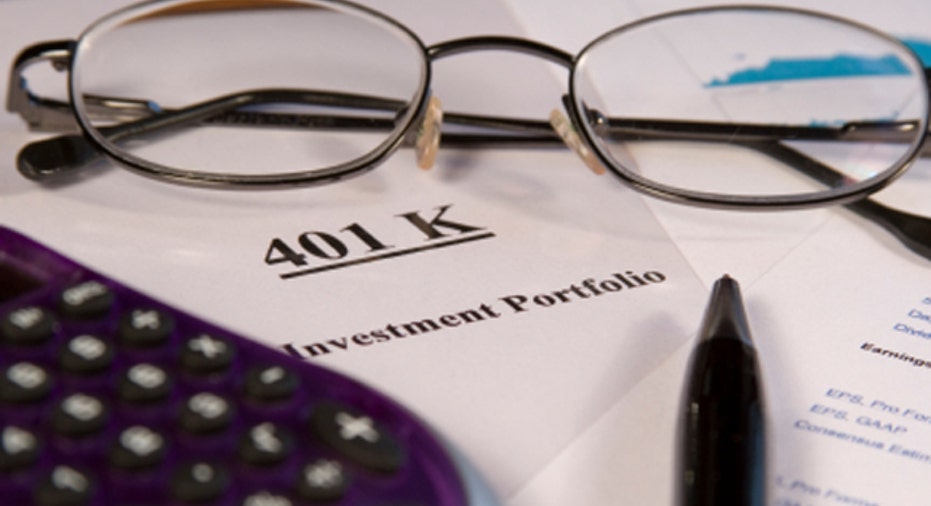5 Ways to Make 401(k) Plans More Like Pensions

It may feel like as though 401(k)s have been around forever, but they’ve only been with us since the 1980s (okay, maybe that is forever). Until the 401(k) came along, if you had a workplace retirement plan it came in the form of a traditional defined benefit pension.
Employees didn’t need to do much. Employers made contributions and managed the pension funds. When you started a job, enrollment took place automatically; when you retired, regular checks started coming in the mail and continued for the rest of your life.
The 401(k) actually got started as a loophole in tax law that gave taxpayers a break on deferred income. Its name is taken from a section of the Internal Revenue code that made the accounts possible. But plan sponsors soon realized the 401(k) language provided the basis to offer voluntary workplace savings plans using a pretax payroll deduction. Shifting to defined contribution (DC) retirement benefits would allow employers to lose the cost, risk and administrative hassle associated with defined benefit (DB) plans.
The rest is history. The 401(k) took off, and DB pension coverage plunged.
How’s that working out for you? Probably not so well. The annual Retirement Confidence Survey from the Employee Benefit Research Institute finds that Americans’ confidence in their ability to afford a comfortable retirement has hit a new low. The percentage of workers who say they are “not at all confident” about having enough money for a comfortable retirement grew from 22% in 2010 to 27%, the highest level measured in the study’s 21-year-history.
But mourning the decline of private sector defined benefit pensions won’t bring them back. So a group of industry professionals convened a working group, the Retirement 20/20 Initiative, to brainstorm ways to get defined contributions to look — and behave — a bit more like defined benefit plans by generating reliable income streams in retirement. The group includes actuaries, economists, employers, participant advocates, investment experts and academics researchers.
“Employers, individuals, society and the markets all have a stake in this,” says Emily Kessler, a senior fellow at the Society of Actuaries who leads the Retirement 20/20 initiative. “It’s in society’s interest because money we spend to support the elderly is money we don’t spend on children and other things. We need to make sure everyone has an adequate source of retirement savings and income, so that we don’t have to use taxes to support retirement.”
Here are the five best ideas to emerge from Retirement 20/20:
Focus on income, not accumulation. The 401(k) account statement you receive regularly shows how much you’ve accumulated, not how that sum translates to income. Retirement 20/20 recommends adding income projections to account statements as a way to get individuals to think more about income.
Create incentives for income. While most retirement savers prefer taking a lump sum distribution at retirement, tax incentives might convince them to annuitize at least part of the nest egg. Retirement 20/20 recommends preferential tax treatment for annuity income. Another recommendation sketches out a plan to include default annuitization options in DC plans.
Better risk-hedging. Researchers recommend allowing investors to choose a pre-set portfolio that emphasizes fixed income, particularly Treasury Inflation Protected Securities (TIPS), and much less investment in equity, particularly at retirement. The pre-set portfolio model would permit lower administrative costs and a design that meets target risk goals at retirement. “While this may require that individuals contribute more to achieve the same retirement income, it would also protect them against market crashes,” the report notes.
Go for stability, not guarantees. DC plans that offer income conversion options could make these plans less costly to run by providing something less than an absolute guaranteed benefit — for example, a benefit with an inflation adjustment feature that can be adjusted over time. Retirement 20/20 suggests another alternative that would have employees work toward a targeted benefit that isn’t guaranteed, but structured so that workers who make a certain level of contribution would likely get a defined benefit within 10% of the target at retirement.
Create fewer, bigger plans. Unseen fees charged to investors are one of the biggest variables in 401(k) plan performance — especially at smaller companies. These include investment product fees, administration and record-keeping fees and other fees for investment advisory services, insurance and auditing. Research by Brightscope.com shows that average 401(k) total plan cost can be as low as 0.20% of assets for the largest plans and a whopping 5% for smaller plans.
Retirement 20/20 suggests regulatory changes that would allow more small employers to band together in larger plans sponsored by an entity other than the actual employer; here, it points to the success of TIAA-CREF, which has a long history of administering highly cost-efficient DC plans for academic and non-profit employers.
“There’s a wonderful opportunity here to drive higher value and better outcomes for plan participants,” says Bruce Corcoran, managing director of institutional K-12 markets for TIAA-CREF. “It’s more challenging to do with plans [covered under the] Employee Retiree Income Security Act, but it’s a bit of an art.”